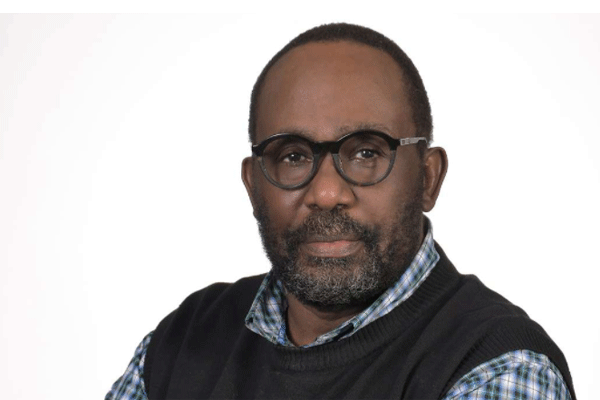Prime
Nyege Nyege and ghosts of Uganda’s north-south divide

Author: Charles Onyango Obbo. PHOTO/FILE
What you need to know:
The attack on Nyege Nyege is how some of them express their frustration at what they see here as a national aesthetic bias
Last week, in a bold power grab, the Uganda Parliament banned the 2022 edition of the international music festival Nyege Nyege.
The festival, to be held from September 15 at Itanda Falls in the old industrial city of Jinja, was founded in 2013 and is now Africa’s premier celebration of electronic music.
READ: Nobody can stop Nyege
An important cultural story, the wanton and hedonism of Nyege Nyege can’t be denied. However, that same subversive abandon and the freedom it expresses are also its power – and why it must be protected.
Following the ban, youthful Uganda went to war. Parliament stared back at them with its threat, but within 24 hours, it had lost both the battle and war. Nyege Nyege will happen.
ALSO READ: MPs should focus on national issues
If all this were a scuffle to dance wildly in the mud and have a youthful escape into Neverland, Nyege Nyege would have only modest significance. But it isn’t. It has become one of the biggest proxy battles over the distribution of the national cake and the restitution for past sins.
In the latest war against Nyege Nyege, the Speaker of Parliament, Ms Anita Among, was the commander-in-chief, aided by lieutenants like the Woman MP of Tororo, Sarah Opendi. Nyege Nyege, to them, is the height of immorality, sexual deviance, homosexuality, devil dance, illegal substances, and an attack on the purity of the republic.
However, they were parroting the earlier arguments of the late Moral Policeman, the pornography and mini-skirt hating Minister for Ethics and Integrity, Simon Lokodo.
In 2018, Lokodo launched a deadly campaign against this “ugly thing” Nyege Nyege and only lost at the line. In defeat, Lokodo lamented that “the devil had won”.
Lokodo, Among, Opendi, and most of the leading anti-Nyege Nyege politicians are mainly from northern and eastern Uganda. It is no coincidence.
There remains a strong grievance in northern and, especially, northeastern Uganda that during the period those regions were blighted by war, the southwest was peaceful and prospered as they endured hell. That they haven’t got reparations for the losses they suffered.
Socially, combined with the disruption of HIV/Aids, the southwest underwent a mini-sexual revolution. Skirts went up, the cleavage came down, and you could have kimansulo (semi-nude over-sexualised shows) in clubs. In the north and northeast, women were being abducted and raped, covering up as much of their bodies as possible.
The freedom Ugandans had to do with their bodies as they wished became another of the north-northeast vs southwest political divides.
If you look at previous Nyeges, the bodies on show are well-fed, toned, with southwest-accented backsides. In certain Ugandan political spectrums, the kids are flaunting the prosperity from which the north and northeast were locked out for years in the faces of the “victims”.
You see these tensions in the Miss Uganda beauty pageants and the underground debates they set off about what kind of beauty is privileged. Aamito Stacie Lagum is perhaps the closest Uganda has to a supermodel. However, Lagum, who is from the north, came to modelling stardom after winning at Africa’s Next Top Model.
The northern and northeastern leaders would argue that the otherwise dominant view of beauty in Uganda is anything but northern; it would be Quiin Abenakyo, Anita Fabiola, or Zahara Nakiyaga. The young Ugandan women who will be dancing away at Nyege Nyege, oblivious to the bigger political drama, will look more like the women in this latter category, not Lagum.
The attack on Nyege Nyege is how some of them express their frustration at what they see here as a national aesthetic bias.
It’s not the only way. We saw it over the regional tensions caused by the death and burial arrangements of former Parliament Speaker Jacob Oulanyah earlier this year. It reared its head over the announcement that the Kampala-Jinja Expressway would be a toll road. Northeastern and eastern politics raged that it was discriminatory to toll a road to the east while none to the west are tolled. Forget for a moment that the road will be primarily a gateway to Kenya, Uganda’s main export and import route, rather than an eastern highway.
Anyone who has ever posted a story on social media on the long-horned Ankole cattle will have been met with pushbacks about how western soldiers looted the north and northeast of livestock during the wars and how southwestern cattle wealth is an insult.
There is a glimmer of hope, though. First, this divide over Nyege Nyege is bipartisan. Secondly, the underlying forces fuelling it can be easily resolved with more significant national equity. It’s a burden passed on to a younger generation that wasn’t part of the wars in the north and northeast. The clock, therefore, is on the Nyege Nyege generation’s side. They will outlive their foes.
Mr Onyango-Obbo is a journalist, writer and curator of the “Wall of Great Africans”. Twitter@cobbo3





